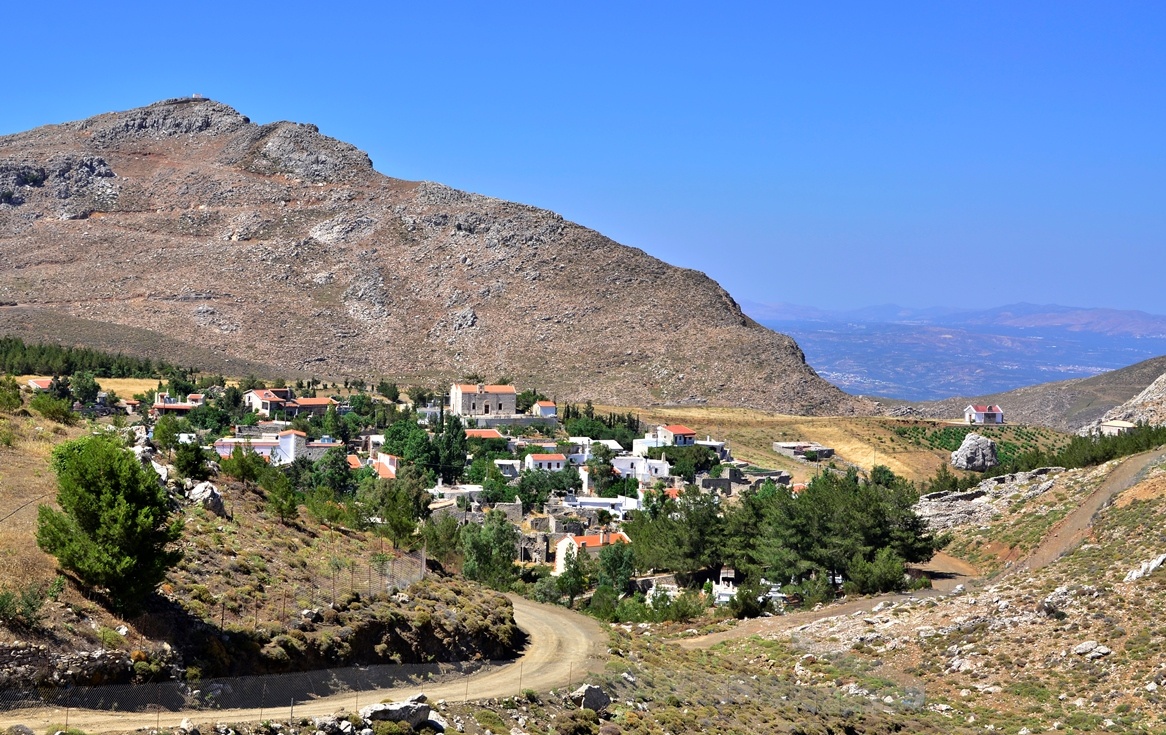
Ethia has been listed a traditional hamlet. It is a typical example of a mountain village of Crete, on the Asterousia Mountain Range at an altitude of 740m, surrounded by five mountain peaks. It is a very impressive land and very well-preserved, thanks to the efforts of the locals, who have been working tirelessly for years on the restoration of its buildings, laying down cobbles in the narrow streets, and, mainly, keeping their village alive, despite the difficulties due to its distant location.
The name Ethia (Itea – Itia, meaning “willow”) originates from a plant, as do the names of other villages in the area (Amygdalos, Mournia). Legend speaks of a large tree with enormous branches that provided shade for the locals and passers by – and feasts and celebrations were held under its leafy branches. There are no traces of this legendary tree any more, but, if you start up the road that climbs the bare stone mountain over Rotasi, your eyes will immediately be drawn to the young green pine trees, that suddenly alter the landscape as soon as you reach the village entrance. It is a bocage planted by the locals, which has become an oasis of green on the treeless ridge of the Asterousia.
The locals are mainly farmers raising animals and toiling the land. The main products include goat and sheep produce (meat, milk and dairy goods), olive oil and raisins, as well as plants used to feed animals.
Ethia is also known for its Ethianos Pidihtos Choros (local lively dance), an interesting variation on a Cretan pidihtos (jumping dance), that is danced nowhere else on Crete.
A documentary on Ethia has been filmed by Vasilis Panagiotakopoulos, titled ‘The Little Palace of Aoria’.
Churches and religious traditions
The village churches are Panagia (Virgin Mary) built in 1909 and Profitis Ilias (Prophet Elijah). Profitis Ilias with its age-old wooden iconostasis, is built on a rising with a panoramic view. According to one tradition, it was built in 1874 in just one day, as the ruling Ottoman Pasha had only allowed from sunrise to sunset for it to be built. A great festival is held here every year for Prophet Elijah’s feast.
In 2007 to honour Mt. Athos monk Evmenios, who was from Ethia, a guesthouse was built in the centre of the village, where travellers are welcomed and many events are held.
Until recently (1965) a quite interesting traditional ritual was kept in Ethia, ‘zosimo tou choriou’ [the binding/circling of the village]. In order to drive back some evil that threatened the village, each woman would take some cotton to the church for the priest to bless. From there, women began to spin it into thread and wrapping it around the village. The thread was left surrounding the village for forty days and then it was collected and used to make candles.
Don’t miss
If travelling on a 4x4 vehicle, don’t miss the opportunity to take the trip south of Ethia, crossing impressive spots in terms of terrain and scenery along a number of dirt roads. Typical points of reference on this route are Kouroupas pit, a deep pit created by water, which clearly shows how gorges are geologically formed, ‘pervola’, with the beautiful limestone ridge and colourful garden right below it, Agia Eirini chapel and the ‘potistres’, a series of stone-carved watering troughs for cattle.
Basket Weaving
One of the oldest handicraft applications on Crete is basket weaving, which has recently declined. Using flexible branches from bushes or reeds, the locals once created many of the everyday objects used in the agricultural and herding lifestyle.
Today, basket weaving still flourishes in the villages of Ethia and Rotasi. You can find samples of this art on the village squares.
A recently published book, “Ethia: Pos na se ksechaso” [Ethia: How can I forget you?] (Itanos publications), discusses the habits, customs, traditions and lifestyle of the residents of Ethia and the Asterousia in great, colourful detail.
Information Centre for the Protected Area of the Asterousia and Ethia Camping Centre.
Arriving in the village from Rotasi, you’ll meet the old – now defunct – elementary school, restored by locals themselves (Ethia Regeneration Society). Ask the villagers at the cafés to unlock the school so you can travel in time through old photographic material, traditional Cretan attire and other heirlooms gathered by residents and exhibited in this building, which villagers treat as their home.
In 2011, the Municipality of Archanes-Asterousia attempted to revive the memories and the village itself by organising events such as children’s camping and, now, an information centre for the protected area. Set to start operating in 2015, it is located in the schoolyard and will provide information on the surrounding mountains, their biodiversity and activities available in the entire Municipality. Furthermore, inside the school, visitors will be able to watch documentaries and films on the Municipality and the protected area. You will also be able to borrow special equipment for activities such as bird watching, cycling, etc.
Apart from the information centre, the yard also houses a fully equipped, contemporary camping site where you can put up tents of your own or borrow some from the centre. The camping area includes tent shades, toilets, outdoor showers, water taps, a small kitchen, tables and benches.



 Ethia
Ethia